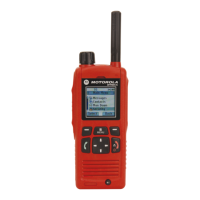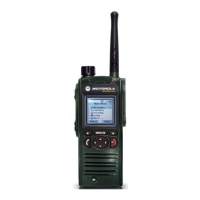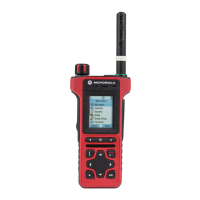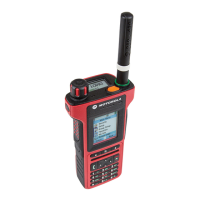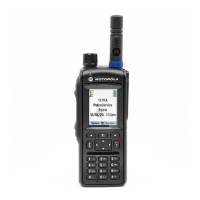Disaster Alert
Disaster Alert call is a broadcast emergency call initiated by the radio, with emergency pre-emptive priority that
everyone in a broadcast area can hear. This feature is specifically designed for catastrophic situations, such as
earthquakes, and has the highest priority over other calls. All radios under Disaster Alert display emergency
notification on their screens. The alert message, its duration and destination talkgroup can be configured in the
codeplug.
In order to initiate Disaster Alert, switch the radio to Disaster Alert mode and press PTT button. When the call ends,
the radio will exit the Disaster Alert state.
During Disaster Alert, other functionality is impacted:
• When Disaster Alert begins, any other ongoing services are terminated.
• No other services can interrupt this type of call.
• Hot Mic functionality cannot be used.
• Speech can only be in Clear mode, even if any of the encryption services are enabled. The only exception is E2E
Encryption.
Note: Not all infrastructures support this feature. Please consult with your service provider before enabling
this feature.
Short Data Services
The radio supports the following Short Data Service (SDS) message types:
• SDS Status.
• SDS User Defined Data Types 1, 2, 3.
• SDS User Defined Data Type 4 with or without SDS Transport Layer (SDS-TL).
The feature supports the following addressing modes:
• Radio to radio.
• Radio to talkgroup.
• Radio to external subscriber number (gateway address).
Note: For SDS-TL, the message can be sent through the service center.
The radio provides a short data bearer service for both internal and external applications.
The radio supports SDS-TL services which provide end-to-end acknowledgments, delivery report requests, and
message numbering for SDS user-defined data type 4 messages. The TL also provides SDS access for applications
that do not request these transport layer services, however, use a Protocol Identifier (PI). The radio can send the
delivery report by using an appropriate TETRA signaling, even if the originator requested a short report. The radio
can support the old SDS-TL standard for operation on legacy systems, or for operation on other SwMIs.
An externally connected device may access the SDS services in the radio using AT commands and TNP1 protocol.
An external application may use this service to send and receive SDS statuses, SDS user-defined data types 1, 2, 3,
and 4.
Downlink SDS messages type 4 are presumed to contain a PI for identifying the target application. If an external
application has registered with the radio for that PI, the radio delivers the message to the target application. The radio
may receive downlink SDS messages that are successive retransmissions of a message already received and
acknowledged by the radio. The radio does not display these messages, nor store in them in the inbox, nor send them
to an external application.
Services and Features | 35
68015000878-G | | Send Feedback

